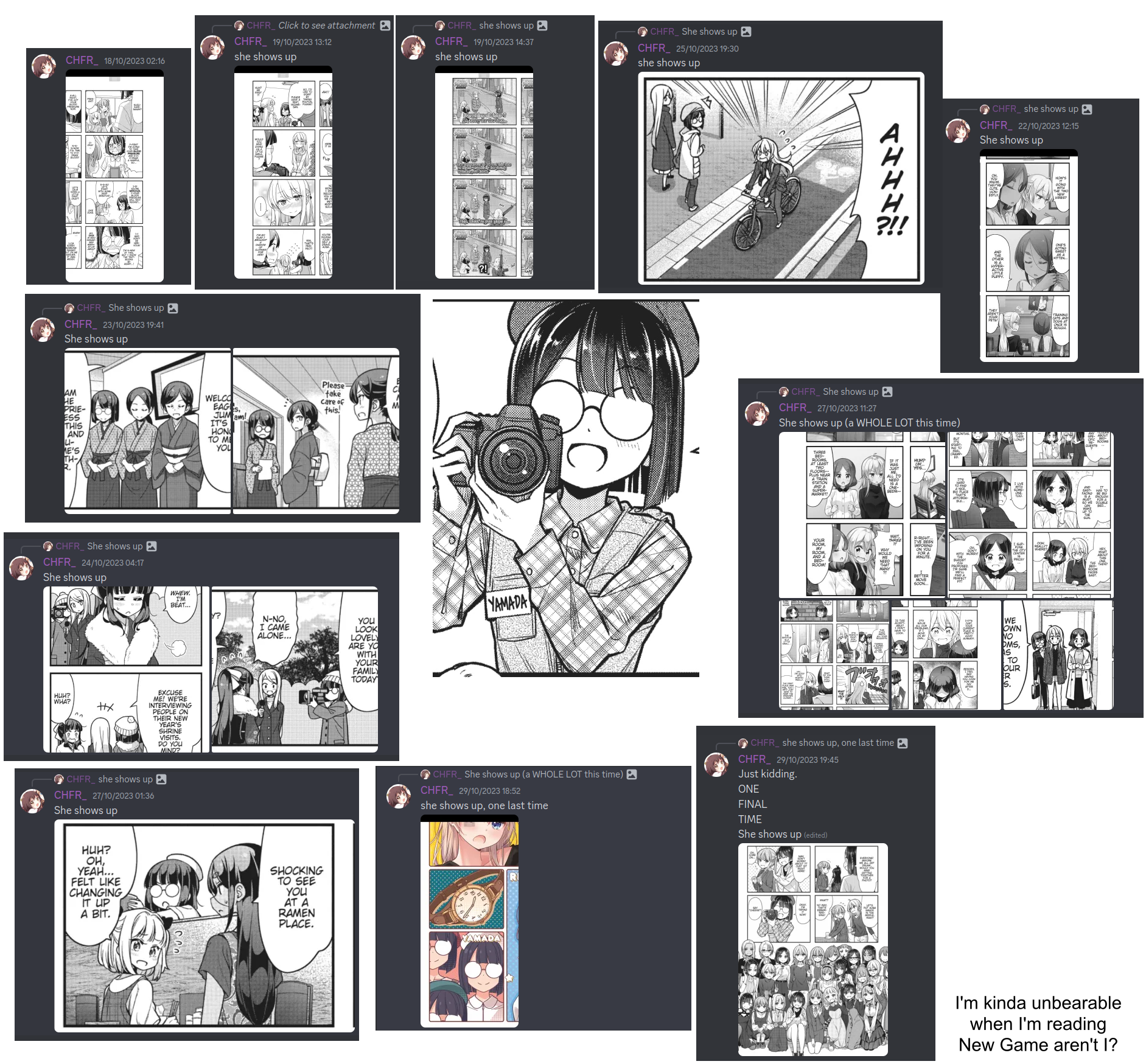
I think some people have already seen the long-winded paragraphs I tend to write when it comes to New Game.
Because this manga is particularly dear to me, I’ve decided to do one definitive writeup about it, in a format that’s a bit more permanent than Discord messages.
If you’re ready to listen to my ramblings, then you may proceed. While always try to derive something meaningful about my writeups on this site, I can’t guarantee that you’ll come out particularly enlightened out of this one, as I’m mostly writing this for myself.
Slice of Life and ideals
The SoL genre, especially when it comes to Kirara series, is usually a pleasant experience, but occasionally, if I think really hard about it, or engage with them in a less-than-optimal mood, will leave me with some conflicting feelings: a bit of angst and envy.
Hidamari Sketch, for example, is a lovely manga, but seeing the girls’ everyday life in the Hidamari apartments also gives me a longing feeling.
The idea of spending your everyday life with neighbors who share the same passion as you isn’t realistic, yet, Hidamari Sketch provides a window to peek into this idealized setting. Slice of Life presents to you things you don’t have, and does so in the best possible light.
Even when hardship presents itself, it is usually solved in a cathartic and satisfying fashion, which is, in its own way, another ideal. It’s not a given that people grow from hardships and interpersonal conflicts. It’s common enough for conflicts and misunderstandings to just end in a way that feels gross and hurts everyone involved.
What I’m getting at is: if Hidamari Sketch is the “art-school ideal”, if Non Non Biyori is the “rural ideal”, then New Game is the “workplace ideal”.
Enough about Kirara philosophizing, let’s actually talk about New Game.
Things I love in New Game
Spoilers ahead. Ideally, you should read the whole manga before you read this, but if just saying that was enough to convince everyone, then I wouldn’t have to write this in the first place.
The art
I put this one first as it is probably the most self-evident, but I’ll point it out anyways Shotaro Tokuno is an amazing artist.
Characters
The author goes for a more realistic style: While the characters’ features are sometimes made chibi, that’s as far as it goes. This artistic choice pays off in the close-up shots of the faces, which are always beautiful.
I am particularly fond of how eyelashes are drawn.
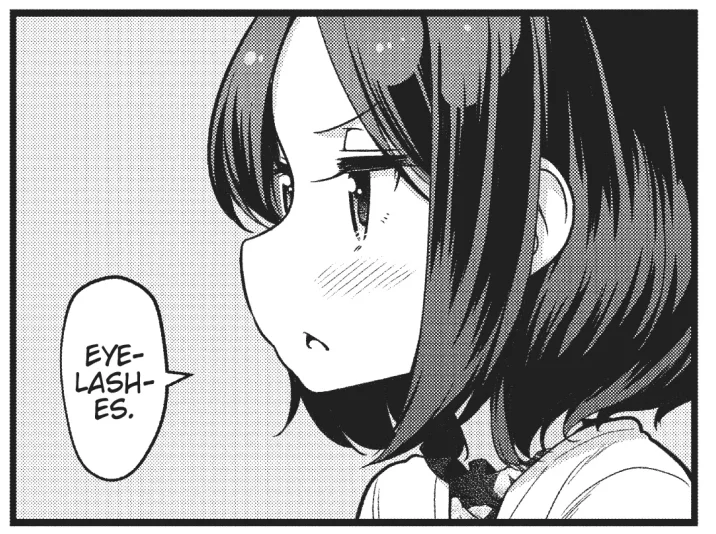
Backgrounds
A lot of thought is put in New Game’s background. Most of the time, Shotaro realistically depicts the workplace (which is something I’ll elaborate on in a latter section), but abstract or blank backgrounds are also used for impact, comedy or when a bigger focus is put on the characters’ feelings.
The art in the art
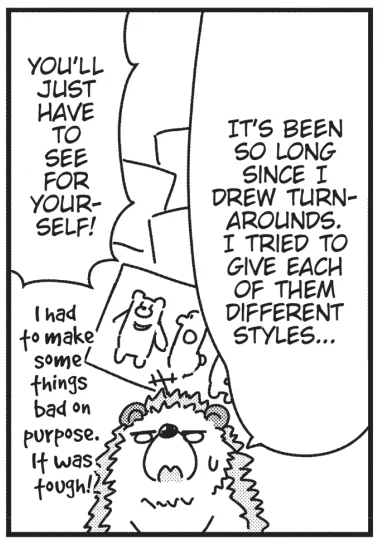
Because of Aoba’s job, art plays a quintessential role in the story. The author needs emphasize each character’s personality through their art, and also to make them improve over time.
When a character makes adjustments to their work, it needs to be subtle enough to not feel forced, yet noticeable enough to be spotted by the average reader. Because of that, adjustments are often not about technical mistakes:
For example in volume 9, Aoba has to challenge her usual cute style in order to meet Yun’s vision.
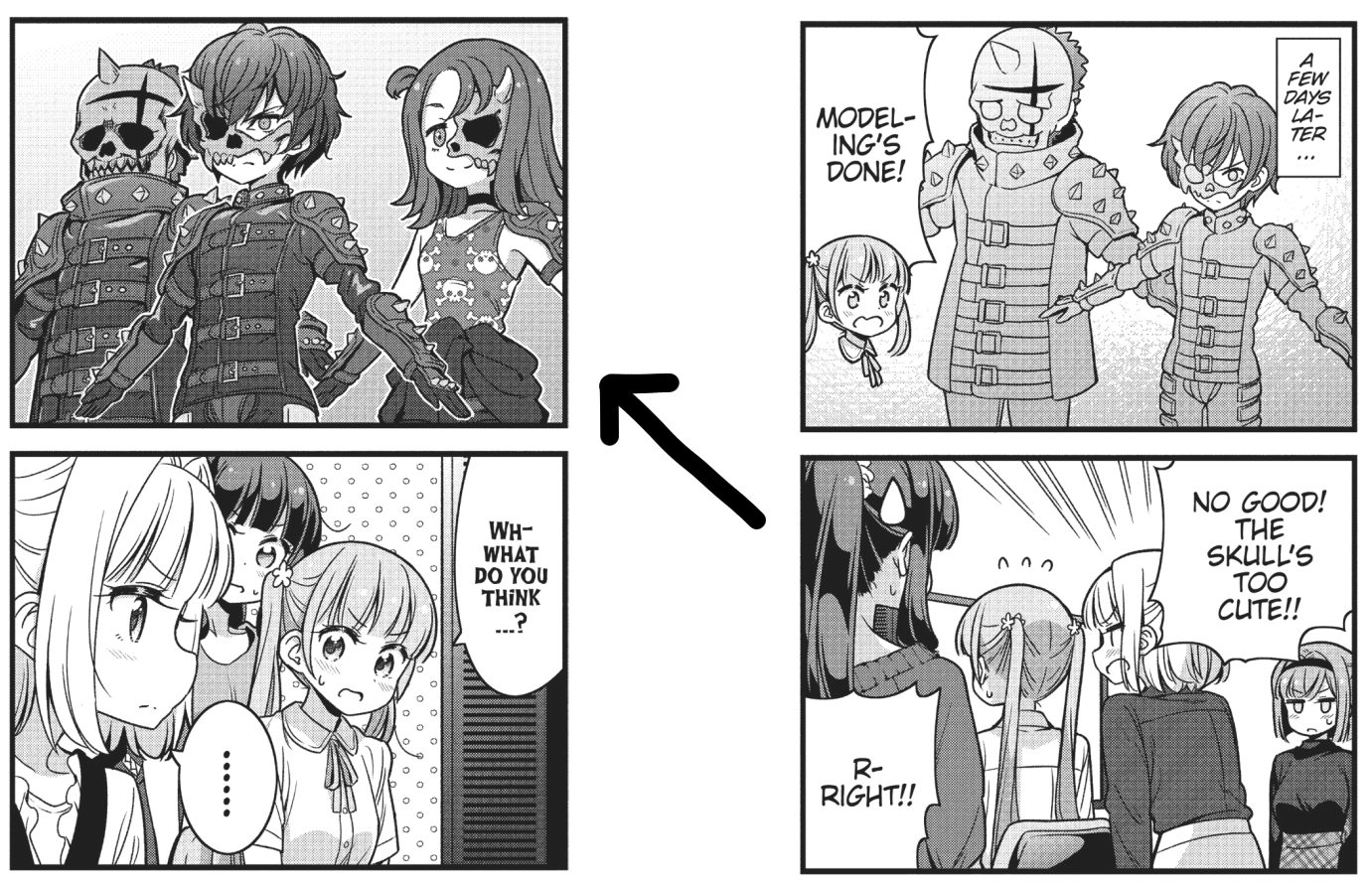
Another way to sidestep this issue by making the roadblocks more about not knowing what direction to take. There are a few examples of this:
- Aoba designing Peco’s final boss in volume 4 and FS4’s main character in volume 11;
- Momiji one-upping Aoba by providing a better design for FS4’s final boss in volume 11;
- Kou and Hotaru having a friendly art competition over Sophie’s approval in volume 9.
All of these moments show the different aspect of the problem solving tasks involved in creative work, ranging from understanding the character to understanding the client.
The idea of raw skills is not completely abandoned though, and is always discussed in interesting ways, especially when it comes to Kou or Hotaru.
A work life manga about work
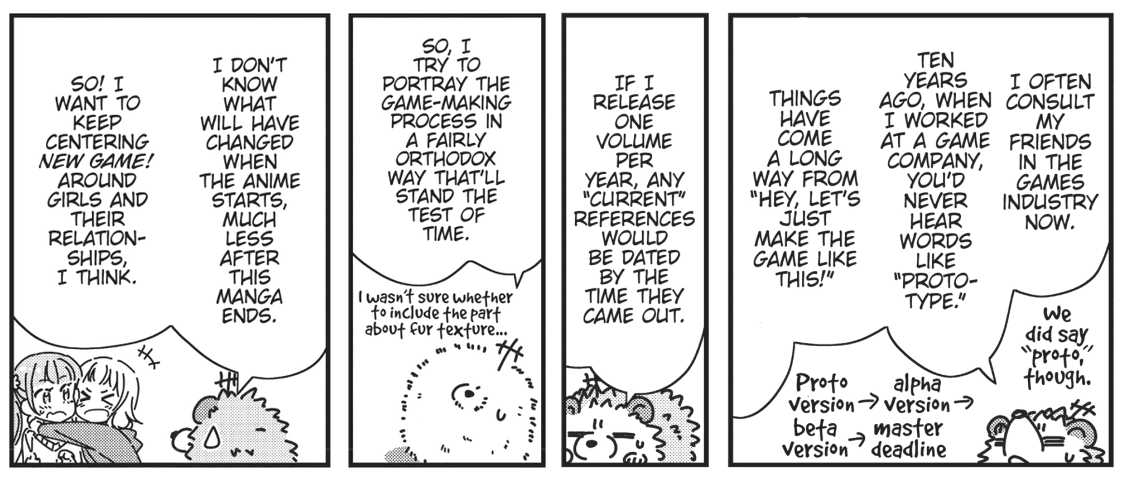
When making slice of life, the setting is sometimes an afterthought, an excuse to focus your story on a certain aga range, or dress characters in OL clothes(nice), and so on.
While I can appreciate manga like that, I still have a soft spot, as said in another article , for stories where the characters are really passionate about what they do, and Naw Game is responsible for this.
Backgrounds!
The earlier section about backgrounds was laughably short, that’s because most of what I wanted to say there would fit this part a lot more, so I cut all of it. This is where true background talk begins!
I think New Game’s backgrounds really help in defining the setting and the characters.
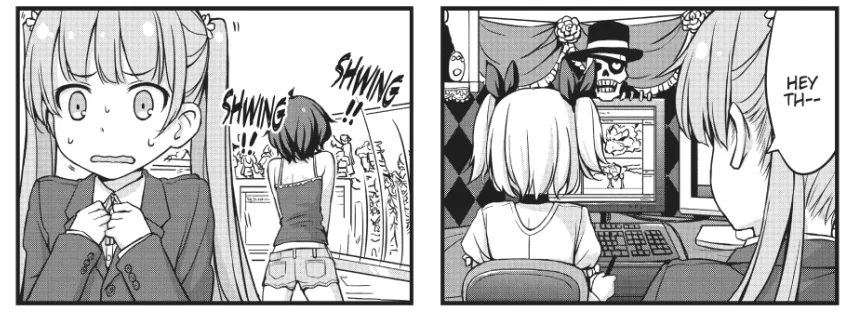
Very early on, the backgrounds are used as an effective characterization device. They wordlessly introduce Yun and Hajime’s quirks to the reader, and to Aoba. The same can be said for Hifumi, whose austere undecorated desk matches her attitude in the beginning.
The backgrounds fit the characters’ personalities.
Isn’t that a bit backwards? Of course they would match their personalities… they’re their desks!
New Game doesn’t try to get away from the office, it doesn’t hide its cubicles: the manga fully acknowledges that the workplace is a living space. After all, the girls spend a sizeable portion of their life at work, which rings even truer for Kou who sleeps there.
The desks also directly tie into another core aspects of work: experience.
In volume 4, during the Key Art competition, Aoba finds herself completely overwhelmed when seeing Kou’s submissions, and breaks down (in what is the first of many moments in the manga that sting my heart), when she gets comforted, we get an inconspicuous glimpse at Kou’s desk:

That’s when we notice the massive pile of paper, and key art poster of the previous FS title. After seeing that, we go back one page and sure enough:
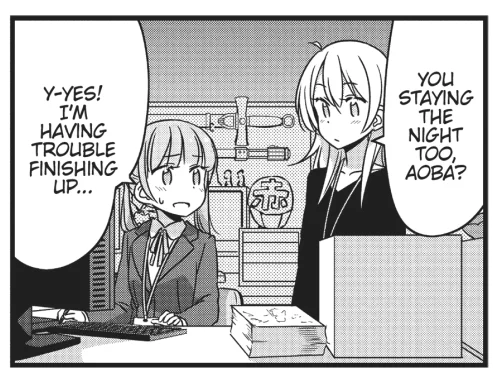
The difference in experience is not only demonstrated by their submission for the contest, but also physically represented by their own desks. This is a harsh experience for aoba, but even then, the chapter still ends on a good note:
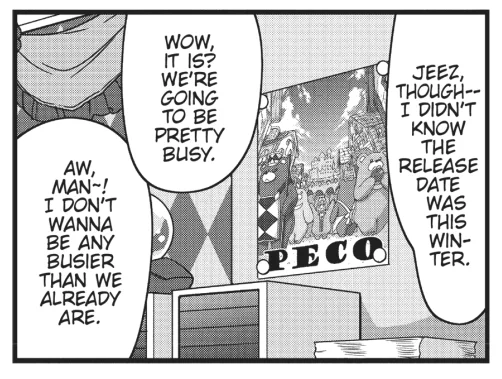
Even though she lost this time, Aoba’s desk started looking just a bit more like Kou’s.
The setting is made all the more immersive for the reader when an entire chapter is dedicated to a seat change.
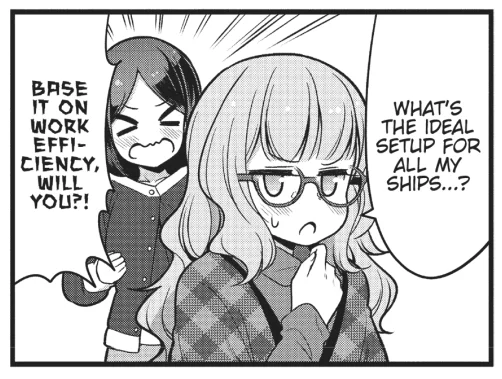
The seating arrangement matters because work efficiency matters; work efficiency matters because the work matters; the work matters because Eagle Jump matters; Eagle Jump matters because it’s an integral part of New Game, it’s where the girls live and learn and interact and thrive!
If all of this isn’t convincing enough, then the final chapter is sure to put the nail in the coffin… But you’ll have to read it yourself.
I think you can really tell a lot with a background, even in mundane settings. I’ll end this section with something unrelated to New Game, but maybe one of the most heart wrenching use of backgrounds as a storytelling device that I know of:
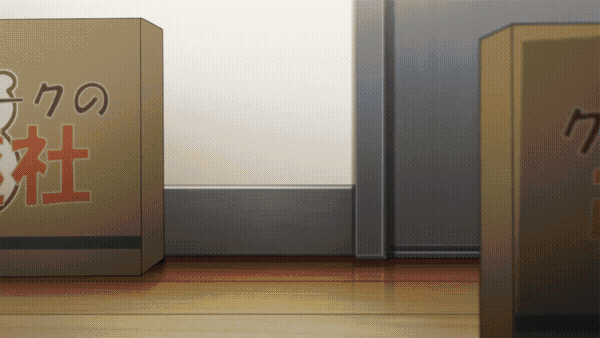
(you should watch The Idolm@ster btw)
The workplace ideal
That said, the art is not the only thing this manga has going for it.
At the start of this article, I mentioned “ideals” in the slice of life genre. Many aspects in New Game strongly resonate with me and my work philosophy, and makes me go “I’d love to work there”.
This section will be all about how this manga makes Eagle Jump feel like such an appealing place to work at.
Drive… improvement…

There’s always an appeal to driven characters, you love to see them enter a new world, learn the ropes, overcome setbacks, and strive in their new environment.
Aoba, as a protagonist, fits the bill perfectly, the first thing we notice is her strong determination, and inexperience. Both the reader and her are thrown into this new world at the same time, this is so that the author can set the stage in a natural way, but also has the side effect of making us relate to Aoba, in that her understanding of the workplace at this point, is exactly the same as ours.
Throughout the story, we get to see Aoba assimilate in the company. We witness her growth firsthand as the manga calls back to previous situations, and shows how differently aoba handles them now. The things she goes through shape her as a person and develop her empathy.
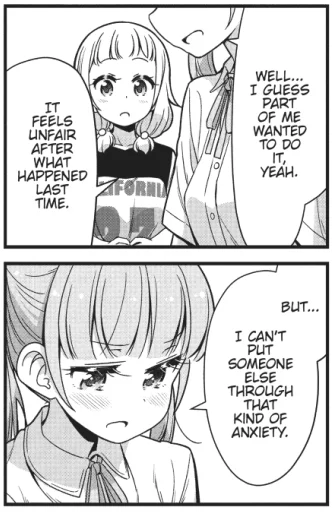
While she does grow, Aoba is still Aoba, we’re used and attached to her personality. After all, we’ve been watching her from the beginning…
And then there’s this scene:

It kinda comes out of left field… right? What I like so much about these panels is the feeling of “oh… yeah, yeah that’s true”, it does make sense after all: we’ve seen her do all that character design work, she did work on this game and the game did come out, and yet it still feels surprising.
It’s the feeling of realizing that the characters undeniably “exist” in their world, Aoba is focused on her goals and aspirations, but it doesn’t mean that her work stops existing once Kou gives it the OK. In the background, another “Aoba” has been appearing, the Aoba that’s listed in the back cover of a game box, the Aoba whose style can be felt through the in-game characters that she designed, tha Aoba who would go on to inspire newer generations to get into this field, people who would look up to her the same way she looked up to Kou.
This is a thing that does happen in art, people will do their own things, and then may sometimes be surprised upon being told they’ve been inspiring others, even though they themselves feel like they’re still far from their own goals. While Aoba is still aware of her rise in popularity over time, it goes second to her aspirations and drive to be a character designer.
…and competition
Art is not always a struggle against yourself, many times in the manga, competitions are held amongst the art team, and colleagues find themselves pitted against each other. New Game excels at exploring the mental journey through those conflicting feelings, where you find yourself wanting to root for your friends, but also don’t want to be left behind.
In all honesty, those thoughts aren’t just contained within the bounds of an organized contest. I believe that every creator has their pride, and will always, if at least a little, evaluate themselves in comparison to others.
I really like the handling of rivalry in New Game, mainly because it’s something I long for. In an online, unpaid field such as 音MADs, feeling of competitivity can be frowned upon. But I believe a healthy dose of it can be a great motivator. For example, last year’s OtoMDM event upped the stakes very skilfully by doing communication and CMs with such high production value, and the resulting videos were absolutely worth it. This feeling of “wow, this is so cool, it makes me want to do my best too” is something I love to see.
That said, New Game doesn’t just explore competition from the side of the main runner ups. Chapter 81 in volume 8 focuses on Yun, and how she feels about being sidelined from the scorching, self-propelling rivalry that Aoba and Momiji have.
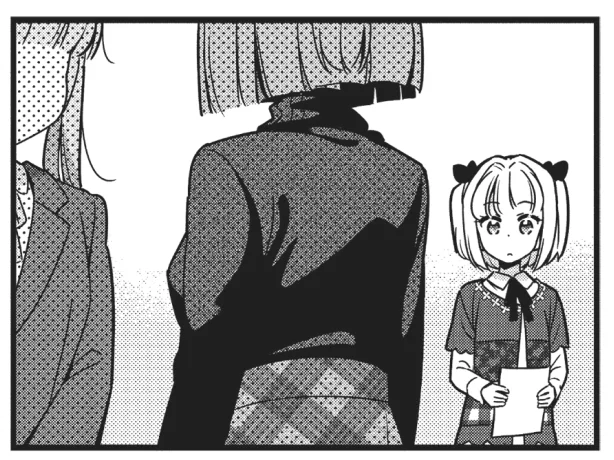
At the end of the day, she does lose, the manga doesn’t deny differences in skills nor does it hand out wins out of pity. But despite that, it doesn’t mean all her efforts were wasted, she eventually sees them pay off, not as one of Eagle Jump’s Ace, but rather in a way that complements her own field of expertise.
The programming team
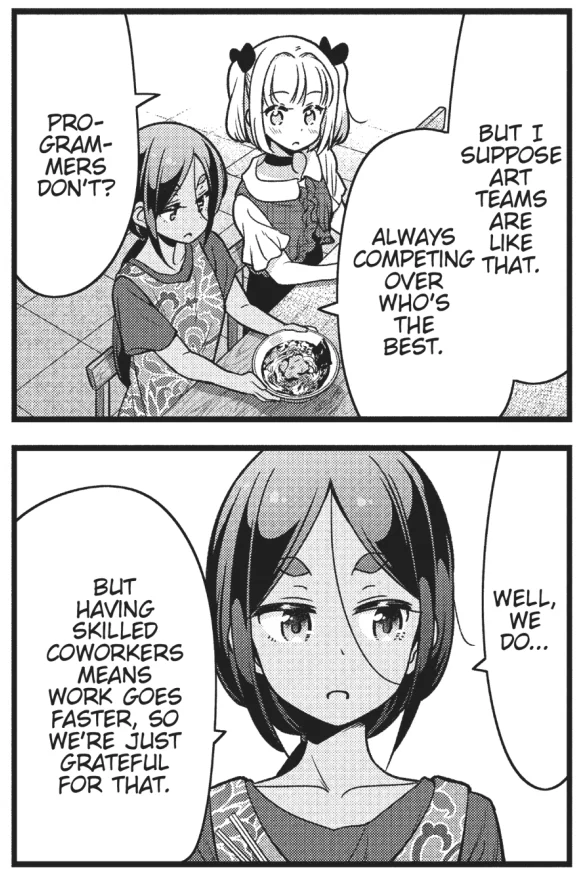
It’s arguably the second most represented team in the manga, and sure enough, I love it.
Shotaro, despite having only worked as an artist in a game company, still manages to represent the team in an interesting way, showing a clear understanding of the processes, without going too deep in the technicalities.
The team is barely introduced at first, and initially just serves to introduce Umiko, but their role and range of interactions is expanded upon once Nenecchi joins the team as a programmer…
…
Let’s talk a bit about Nenecchi.
The programming team (and Nene)
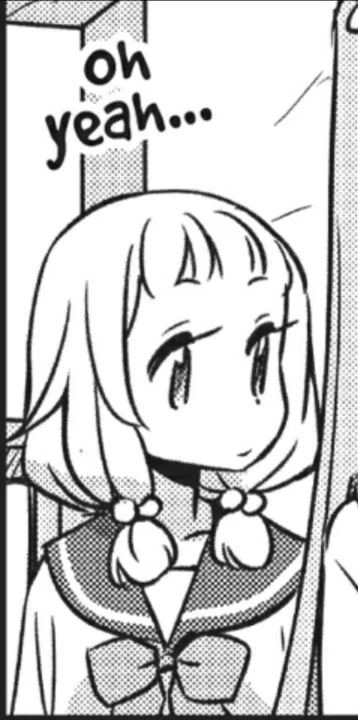
Nenecchi is a great example of how much care Shotaro puts in developing his characters. She’s first introduced as a whimsical friend of Aoba’s, as a way to show her life outside of work. When she joins Eagle Jump as a part-time debugger, she helps give the development team more presence, as there’s now an extra link between Aoba and them. After she learns Eagle Jump won’t hire debuggers anymore, she picks up programming, and self-teaches her way through C++, with some mentoring from Umiko, she actually manages to create something, and develops a bigger interest for programming.
I really like how a simple feeling such as “I want to go back to Eagle Jump” led her to find something she actually wants to do in life. Despite starting on a whim, her passion and drive are as valid as Aoba’s to me.
Once she actually joins EJ as a programmer, Natsumi is quickly added to the picture, giving the programming team more presence than ever. There is also another change that happens at the same time, Hajime takes on planning duties, giving more exposure in to the direction/planing departments, which interacts a lot more with the developers.
From this point onward, the programming team stops being just “the guys who code” as the manga starts highlighting their relationship with the planning team and how they deal with spec changes (the Hazuki/Umiko dynamic is awesome don’t @ me).
Nene’s freshness to this field is once again used as a way to help with storytelling in the same way Aoba’s did.

Umiko’s work experience serves as a good catalyst for interesting, more detailed explanations. Her role as Nene’s mentor provides the author with lots of opportunities to give the reader beginner-level rundowns of on-the-field programming work, but also of the human elements, which may differ from those in the art team.
Overall, Nenecchi’s addition to Eagle Jump helped give a bigger focus on the programming team, and the programming aspects of the manga in general. She’s one of the supporting characters that goes through the most drastic life changes out of the whole cast, finding purpose in a job that she started on a whim. This makes me appreciate her a lot.

Thankfully she did not become a web developer.
Volume 5

Volume 5… I think it’s awesome. Volume 5 is a prequel to the regular story. It focuses on Aoba’s school life. If it was up to me, I’d want a New Game feature-length movie about just this volume.
We get to see how exactly Aoba’s desire to join Eagle Jump, which initially started as a childhood dream, solidified into something more concrete thanks to Nenecchi and Hotaru’s help.
Unlike the rest of the story, Volume 5 keeps its cast fairly minimal, limiting itself only to the three aforementioned girls, and one new character.
Shotaro does a good job at making a school-life manga, the atmosphere feels more relaxed than the rest of the story. This volume is more about Aoba’s self-discovery than intense artistic work, on the contrary, it’s where Aoba actually learns the fundamentals of art, so the advice she gets is fairly generic and palatable for any audience.
The bulk of the art-talk revolves more around Hotaru, who, from her very introduction, starts off with a higher skill level than most characters in the series.
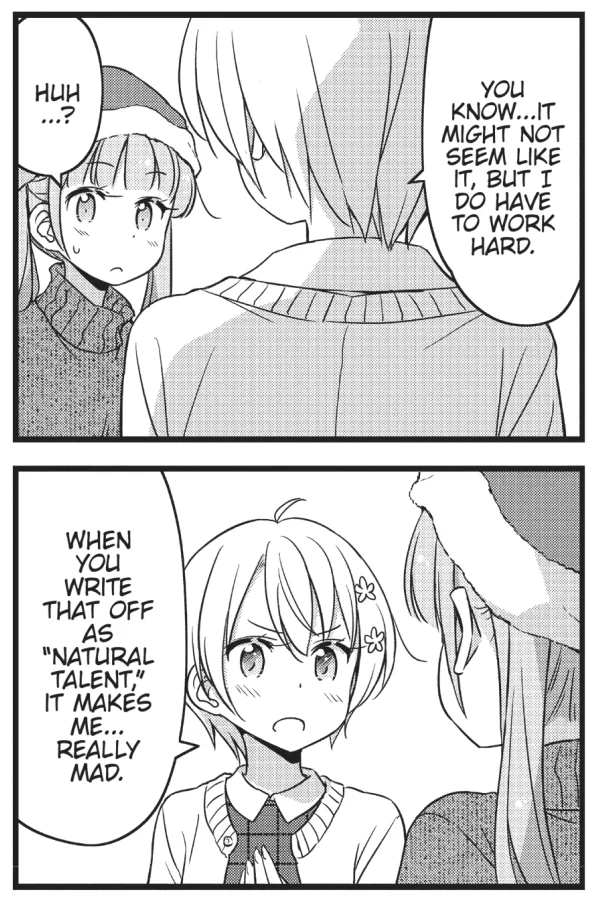
Hotaru is a great character. The author makes sure to mostly keep her away from the main cast (until it really matters), but the few times she’s made to interact with someone, it always result in a very interesting dynamic due to her almost overwhelming skill. Kou’s synergy with Hotaru ended up being my favorite for spoilery reasons.
All in all, volume 5 acts as a great prequel story for Aoba, contextualizing her high level of motivation when volume 1 starts. It also explores Hotaru’s character and sets us up for the next times we’ll hear of her.
Character development
It’s very impressive how Shotaro makes sure to tie every loose end when finishing the story, everyone throughout the story had an opportunity for growth. The kind of growth characters experience is always directly linked to their careers: some improve in their area of expertise, some get promoted, some move to an entire new position altogether.
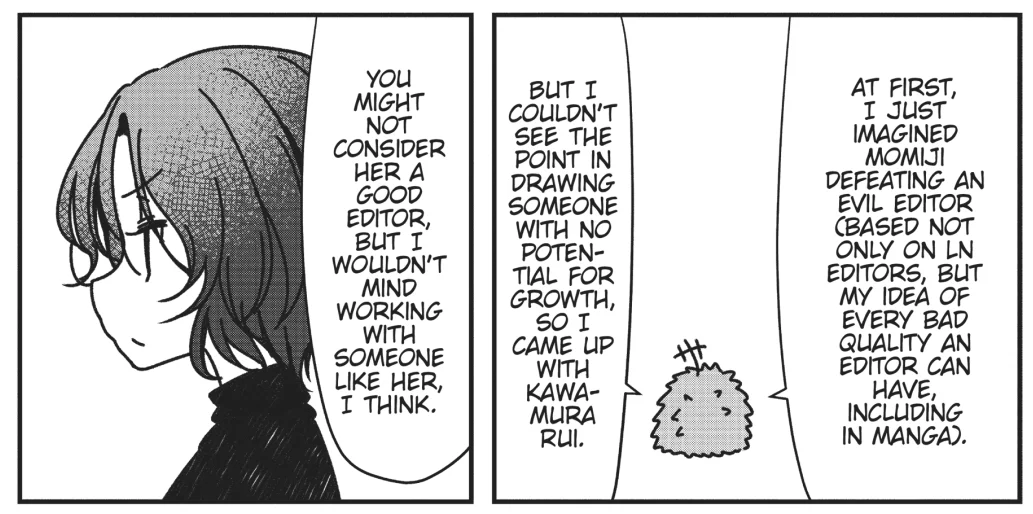
I initially planned to list the subtle (and less subtle) ways in which everyone grows, but I think experiencing it firsthand would really make the manga more enjoyable for you.
Conclusion
I’m not really sure how to conclude this article to be fair, I haven’t built up a satisfying narrative to resolve to and I’ve already professed my love for “creation-focused” manga in my GA article (I gotta reread GA soon)…
I guess I just really love New Game. I love the quality of the art. I love seeing the girls doing what they love and getting better at it. I love seeing how each of them personally deals with seeing their colleagues as friends and rivals at the same time. I love how the programming team is represented. I love how every character is given meaningful and diverse development.
New Game is a window to my idealized view of what a fulfilling job should be like. It’s a manga that never fails to put a smile to my face. It’s a display of how to handle rivalries, and compete in a healthy way.
Please note that, while I spoiled many elements, there are still many more I haven’t addressed, not because I didn’t like them, but rather because if talked about everything I liked, I’d have to upload the entire manga.
So, if this has convinced you to start reading New Game, then by all means, please do! I, for one, will surely give it another read around the end of this year.
